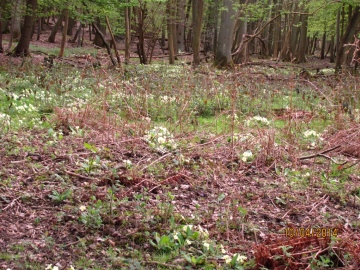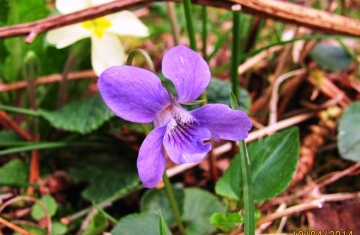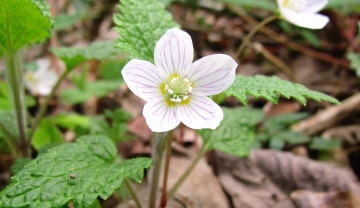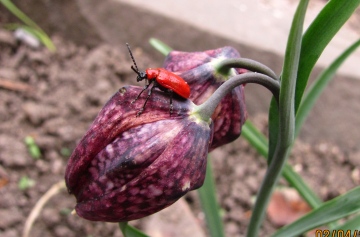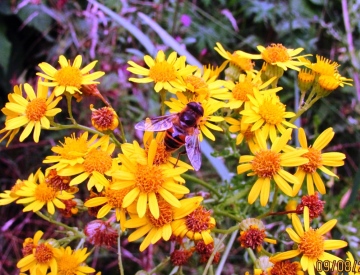As a youngster it was one of my favourite destinations during Sunday morning walks with my father as Woodcock could usually be flushed from its depths in winter and in spring the ground was carpeted with Primroses, Bugle, Dog Violets and other flowers. Midsummer was a different matter though as clouds of mozzies would soon send you fleeing towards higher ground! It seemed wetter in the 1950s than it does now – the huge number of mature oaks in the adjoining woodland soaking up the rain before it reaches the valley bottom – but in the Walkers’ day it must have been a swamp in winter as the woods would have been regularly coppiced and few of the standard oaks allowed to reach the size of those present today. Despite the wettest winter on record I was able to negotiate most of it in normal walking shoes during a recent visit but much to my delight I found that despite the ravages of deer elsewhere in the wood the ground was carpeted with Primroses and Common Dog Violets. In common with other
woodland valleys in the Forest the oaks are reluctant to get their roots wet and instead there is a scatter of Ash, Alder and Crack Willow, which allow a lot more light to reach the ground.
Other woodland flowers such as Yellow Pimpernel, Bugle, Marsh Bedstraw, Arum, Wood Sage and these Wood Sorrel were also beginning to respond to the spring warmth; so too, alas, early rising mozzies, and several were able to advance their life cycle at my expense before I left!
If the Silver-washed Fritillary is ever to return to the Forest, where it was last recorded in the 1950s, then ‘The Mores’ perhaps offers the best bet. I shall be there in the summer, looking!
When I first took this photograph of a bright red beetle in the garden a couple of weeks ago I assumed that it was the Black-headed Cardinal Beetle Pyrochroa coccinea but closer inspection (while writing this!)
reveals it to be the Lily Beetle Lilioceris lilii. The wing cases are more rounded, shinier and dimpled than on coccinea and the antenna are entire rather than comb-like. And the moral of this story is – don’t make assumptions! Although it has been a brilliant spring so far for butterflies and bumblebees (saw my first ‘worker’ Bombus hortorum on 7th April and first queen Cuckoo Bee B. vestalis earlier this week) other insects have been slow to appear in the garden but the Drone Fly Eristalis tenax
and Tapered Drone Fly E. pertinax are now common and the Narcissus Bulb Fly Merdon equestris has recently paid me a visit. By the look of them, its grubs seem to have been munching their way through some of my Bluebell bulbs!
PS : I have just read on the RHS website that the Lily Beetle is the Lily growers' nemesis! The larvae apparently defoliate lilies and fritillarias, among other plants. I fear that the one pictured emerged from the pot containing a Snakes Head Fritillary that I purchased from a local garden centre. Perhaps I should take plant and beetle back there; some gardeners that I know would do so!



















